I would like to integrate with ChannelAdvisor REST API using the SOAP Credentials Flow.
Based on their documentation, I have setup the following in PostMan (rest client in Chrome browser) like this:
When I make the rest; the rest api server returns the expected response:
So, I tried to replicate this in PHP with the following class:
<?php
class ChannelAdvisorREST {
/**
* ChannelAdvisor constants & properties
*/
const BASE_URL = 'https://api.channeladvisor.com/v1';
private $config;
/**
* Class constructor
*/
public function __construct()
{
$this->config = \Config::get('channeladvisor');
}
// TEST
public function test($accountId)
{
// var_dump($this->config);
var_dump(self::getAccessToken($accountId));
}
// TEST
/**
* Method to get access token from rest server.
*
* @param $accountId
* @return string
*/
private function getAccessToken($accountId)
{
return self::curlPOST('/oauth2/token', [
'client_id' => $this->config['api_app_id'],
'grant_type' => 'soap',
'scope' => 'inventory',
'developer_key' => $this->config['api_developer_key'],
'password' => $this->config['api_password'],
'account_id' => $accountId
]);
}
/**
* Method to generate a HTTP POST request
*
* @param $endpoint
* @param $fields
* @return string
*/
private function curlPOST($endpoint, $fields = array())
{
// Open connection
$ch = curl_init();
// Set the url, number of POST vars, POST data
curl_setopt($ch, CURLOPT_USERPWD, $this->config['api_app_id'] .':'. $this->config['api_shared_secret']);
curl_setopt($ch, CURLOPT_URL, self::BASE_URL . $endpoint);
curl_setopt($ch, CURLOPT_POST, count($fields));
curl_setopt($ch, CURLOPT_POSTFIELDS, http_build_query($fields, '', '&'));
curl_setopt($ch, CURLOPT_RETURNTRANSFER, 1);
curl_setopt($ch, CURLOPT_HTTPHEADER, array(
'Content-Type: application/x-www-form-urlencoded'
));
// Execute post request
$result = curl_exec($ch);
// Close connection
curl_close($ch);
// Finished
return $result;
}
}
When I execute the test($accId) method on this class, I get the following response:
boolean false
Any idea why it isn't quite working as same as the PostMan test?
P.S. I have already verified all the config/parms etc... are correct and same as my PostMan test. This class is a snipped version from my original code (created in Laravel 4.2, but this issue is not related to Laravel).


